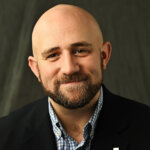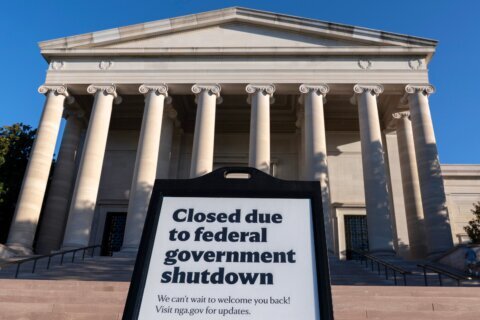This video is no longer available.
On Sunday afternoon, as an F-16 fighter jet out of Joint Base Andrews scrambled to intercept a non-responsive plane over the D.C. area, its sonic boom shook homes and alarmed residents from Gambrills, Maryland, to Woodbridge, Virginia, and throughout the District.
Many thought it was an earthquake, an explosion — or something worse. After the loud rumble, WTOP’s newsroom and social media was flooded with messages from concerned listeners throughout the region.
“I felt the sonic boom or the shake earlier today, I didn’t know what it was I thought maybe something fell on the house or something,” one caller from Glen Burnie, roughly 40 miles from Andrews, told WTOP on Sunday.
Another caller told WTOP that they heard the boom in Fairfax Station.
As information came in, it became clear the loud ‘boom’ that briefly put the area on alert was, itself, no cause for alarm. But while investigators work to reconstruct what happened to the ill-fated Cessna jet and its passengers, many in the area remain curious how the sonic boom from the pursuing F-16 was heard so widely.
What is a sonic boom?
When an object such as an aircraft exceeds the speed of sound, approximately 750 mph within the Earth’s atmosphere varying with temperature, molecules of air aren’t able to get out of the way of the traveling object, which creates the vibrational shock wave we recognize as the “sonic boom.”
A sonic boom can sound different, depending on the object, its size and its altitude in the atmosphere. For instance, a bullet fired from a gun, or a whip snapping both exceed the speed of sound and make a brief, high-pitched cracking sound when heard close up.
In the case of airplanes, their size and, due to changes in atmospheric pressure, the high altitude at which they cross the sonic threshold greatly magnifies the sound that we on the ground perceive as the “boom.”
Why Sunday’s boom could be heard all over
The FAA and other regulatory agencies have rules about when and where an aircraft is permitted to cross the sonic barrier. In fact, most commercial aircraft are not allowed to cross that threshold. Military aircraft are typically instructed to avoid populated areas when crossing the sonic threshold, commonly known as Mach-1. This is to prevent negative effects on the population below.
In the case of Sunday’s boom, likely due to the urgency of intercepting a stray Cessna, the F-16 likely hit supersonic as soon as it had clearance from Andrews, even though it was directly above populated areas.
We don’t know the exact flight path of the F-16, but according to NASA, the planes altitude can extend “the sonic boom carpet,” meaning the area on the ground where the sound can be heard.
For every thousand feet of elevation, the sonic boom can be heard for an extra mile. So if a plane is traveling at 30,000 feet, the boom can be heard for a radius of 30 miles.
Some on the ground even reported hearing two ‘booms’. That is because the aircraft creates two cones of air pressure that cross the sound barrier: one for the nose and one for the tail.
Exactly how strict is the airspace around D.C.?
The D.C. area has what is considered the strictest airspace in the country, if not the world. In fact, if you attempt to fly too close to the White House, Capitol, or Pentagon, you will likely get shot down or, as what happened Sunday, at least have fighter jets scrambled to intercept you.
D.C. has what is called the Special Flight Rules Area (SFRA) which makes up a 30 nautical mile radius around the city.
“Just to fly in that airspace, you have to take training. All pilots have to take it: private, commercial, anyone,” said Richard McSpadden, the Aircraft Owners and Pilots Association Senior Vice President Responsible for Safety.
McSpadden said that anyone hoping to fly through the SFRA has to file a special flight plan and have it approved.
In addition, within the SFRA lies the Flight-Restricted Zone, or FRZ. The FRZ is a strictly enforced 15 mile radius around Ronald Reagan Washington National Airport that has been in effect since September 11, 2001.
The only non-governmental flights allowed within the FRZ without a waiver are commercial flights that go in and out of Reagan National Airport.
Violating airspace within the FRZ is no joking matter.
“If you fly inside the FRZ… the first thing that’s going to happen is you’re going to get all kinds of calls on the frequencies that you should be monitoring,” Mc Spadden told WTOP. “If you keep it up and press in there, you’re gonna get intercepted by an F-16. And if you get close enough to the White House, or in that central area, now you’re running the possibility of actually being shot down.”
Other questions about Sunday’s incident
Separate from the “boom” and its origins, many in the area are asking how the privately-owned Cessna jet made it all the way to Long Island from Tennessee, only to turn around and head into one of the most restricted airspaces in the world.
WTOP’s Dan Ronan, a long-time transportation expert who holds a commercial pilot’s license, told us that, while the National Transportation Safety Board and other agencies will investigate the details of the flight, there are many ways this series of events could’ve happened, including the incapacitation of the pilot.
“It could be that the plane is making those maneuvers to land on Long Island, and then turns around. If they became incapacitated at that moment, the autopilot is flying the airplane. The autopilot is doing the work,” said Ronan.
He added, “I was looking at the tracking data on this, and the plane maintains altitude for hundreds of miles, staying at 34,000 feet until over Virginia, where it apparently runs out of fuel and then begins its descent, a rapid descent and crashes. So they’ll be looking at hypoxia … a medical condition caused by a fatal lack of oxygen at 34,000 feet.”
According to Ronan, if hypoxia caused Sunday’s tragedy, it wouldn’t be the first time.
“Very similar to Payne Stewart, the great pro golfer 24 years ago who died when his plane ran out of ran into a hypoxia situation and crashed in South South Dakota,” he said.
As to why the plane ended up in D.C. airspace, he speculated that could be “just happenstance.“









